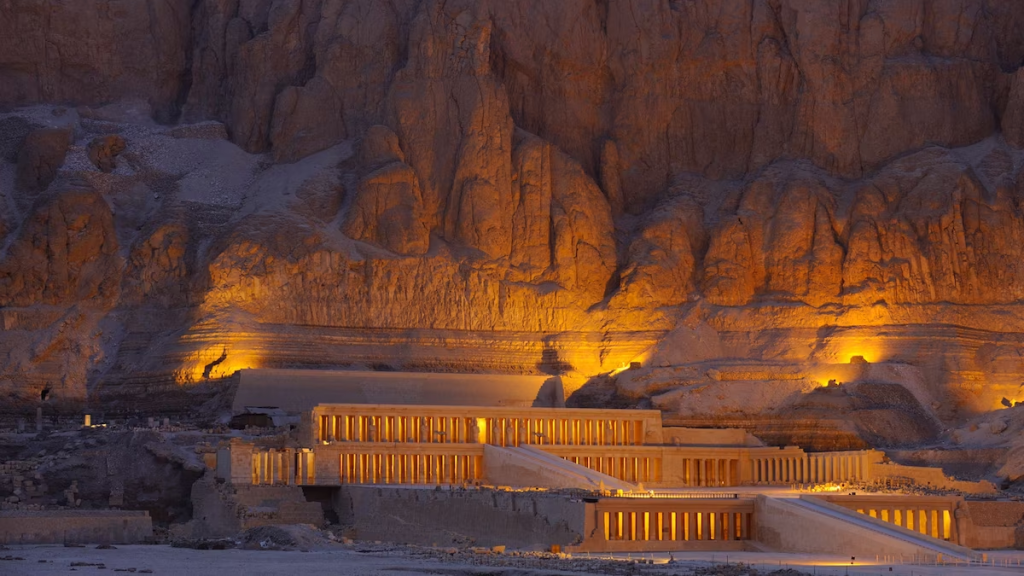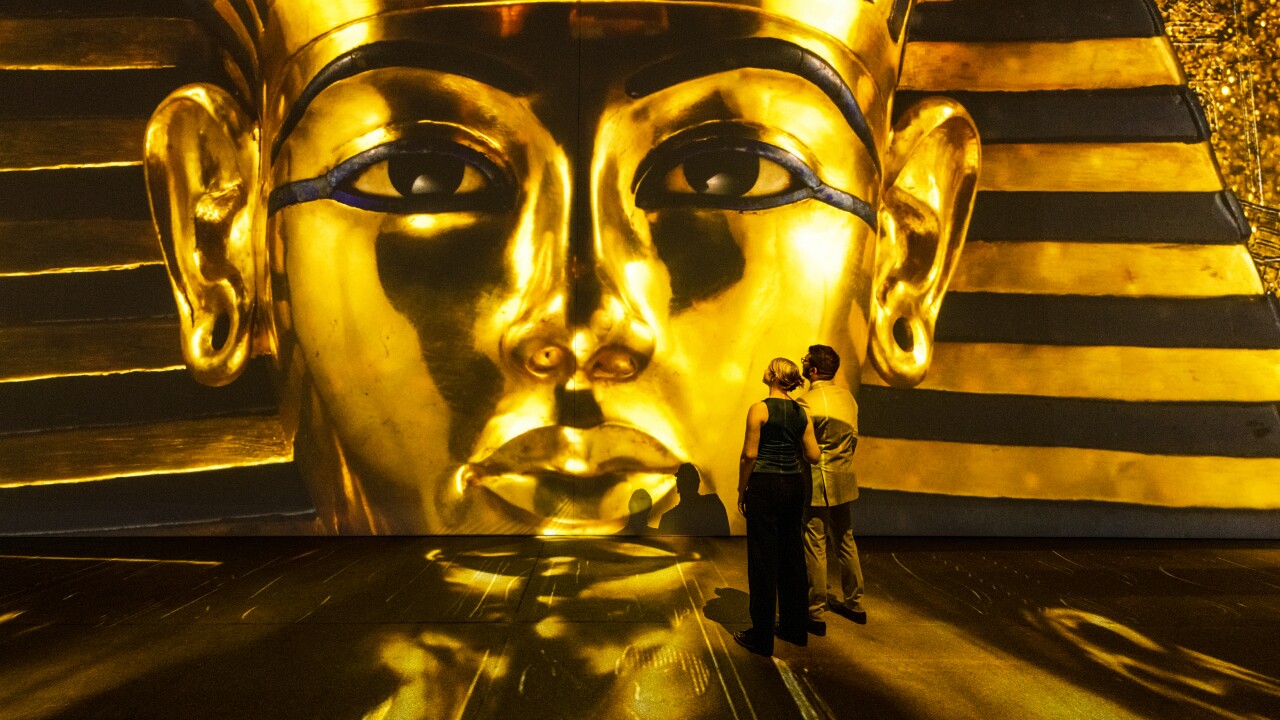
In the heart of ancient Egypt’s West Bank, nestled amidst the rugged cliffs of Deir el-Bahari, stands a magnificent architectural marvel that pays tribute to one of history’s most remarkable rulers—Hatshepsut. This authoritative blog post invites you to explore the awe-inspiring Hatshepsut Temple, a testament to the reign and legacy of Egypt’s powerful female pharaoh.
- The Rise of Hatshepsut: Hatshepsut, the daughter of Pharaoh Thutmose I, defied convention and ascended to the throne as the first known female pharaoh of Egypt. Her reign, spanning from 1479 to 1458 BCE, was marked by political stability, economic prosperity, and remarkable architectural achievements.
- Architecture and Design: The Hatshepsut Temple, also known as the Temple of Deir el-Bahari, was meticulously designed and constructed to blend harmoniously with the natural surroundings. The temple’s unique architecture features a series of terraces, colonnades, and courtyards, creating a visually stunning structure that showcases the mastery of ancient Egyptian builders.
- Mortuary Temple and Spiritual Significance: The Hatshepsut Temple was primarily a mortuary temple, dedicated to the worship of Amun-Ra and Hatshepsut herself. Its purpose was to serve as a funerary complex, where rituals and offerings were made to ensure the eternal prosperity of the pharaoh in the afterlife. The temple’s grandeur and opulence reflect the divine status Hatshepsut sought to establish for herself during her reign.
- The Splendor of the Colonnaded Terraces: One of the most distinctive features of the Hatshepsut Temple is its series of colonnaded terraces. These terraces, adorned with intricately carved reliefs, depict scenes from Hatshepsut’s reign, including her divine birth, expeditions to the land of Punt, and religious rituals. The colonnades not only serve as architectural marvels but also as historical records of Hatshepsut’s achievements.
- The Sanctuary of Amun-Ra: At the heart of the Hatshepsut Temple lies the sanctuary, dedicated to the primary deity of ancient Egypt, Amun-Ra. This sacred space housed statues of the gods and was the focal point of religious ceremonies and offerings. The sanctuary’s design and decoration further emphasize Hatshepsut’s close association with the divine, solidifying her legitimacy as a ruler.
- Restoration and Archaeological Discoveries: Throughout the centuries, the Hatshepsut Temple fell into disrepair and was buried under debris. However, in the 19th century, extensive restoration efforts uncovered its hidden splendor. Archaeologists have since unearthed invaluable artifacts, reliefs, and inscriptions that have shed light on Hatshepsut’s reign, providing invaluable insights into ancient Egyptian history and culture.

